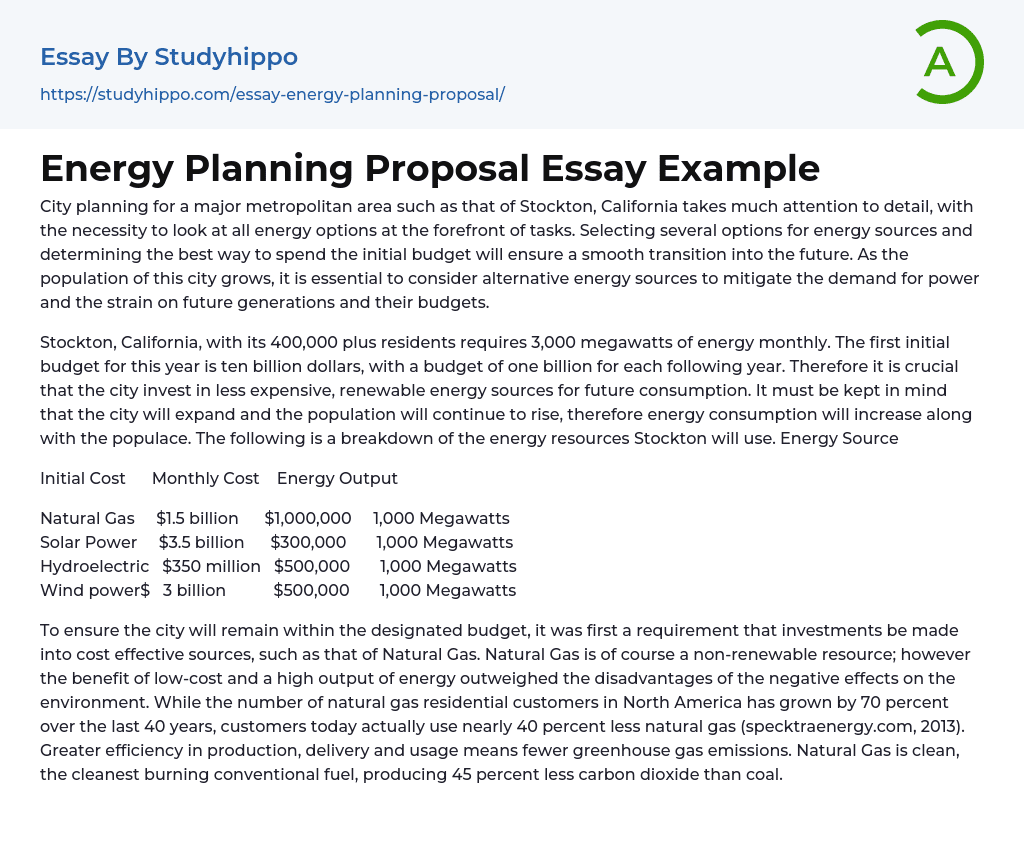In order to ensure a seamless transition into the future, it is important to thoroughly evaluate different energy options when planning for a large city such as Stockton, California. The primary objective is to choose multiple energy sources and allocate the initial budget efficiently. As the population of the city expands, it becomes crucial to explore alternative energy sources in order to decrease power demand and alleviate strain on the financial resources of future generations.
Stockton, California has a population of more than 400,000 and needs 3,000 megawatts of energy per month. The city's budget for this year is $10 billion, with subsequent years having a budget of $1 billion each. In order to meet the future requirements arising from population growth and increased energy consumption, Stockton must invest in affordable and sustainable energy sources. Below a
...re the planned details regarding Stockton's energy resources.
The initial cost, monthly cost, and energy output are all important factors to consider.
The cost of generating 1,000 Megawatts using Natural Gas is $1.5 billion and an upfront cost of $1,000,000. Solar Power has a cost of $3.5 billion for generating the same amount with an upfront cost of $300,000. Hydroelectric power costs $350 million to generate 1,000 Megawatts and requires an upfront cost of $500,000. Wind power incurs a cost of $3 billion for generating 1,000 Megawatts with an upfront cost of $500,000.
Investing in cost-effective sources like Natural Gas is essential for maintaining the city's budget. Despite not being renewable, Natural Gas has advantages such as low cost and high energy output that outweigh its negative environmental impacts. Over the past four
decades, the number of natural gas residential customers in North America has increased by 70 percent, while their consumption has decreased by nearly 40 percent. This decrease in usage, combined with advancements in production, delivery, and efficiency, leads to reduced greenhouse gas emissions. Natural Gas is renowned for its cleanliness as it emits 45 percent less carbon dioxide compared to coal – making it the cleanest burning conventional fuel.
- Alternative Energy essays
- Energy Development essays
- Nuclear Energy essays
- Solar Energy essays
- The elements essays
- Voltage essays
- Business Analysis essays
- Business Plan essays
- Community Development essays
- Competition essays
- Effective Leadership essays
- Leadership Styles essays
- Mission Statement essays
- Negotiation essays
- Outsourcing essays
- Planning essays
- Public relations essays
- Reasoning essays
- Strategic Management essays
- Strategic Planning essays
- Swot Analysis essays
- Environmental Disaster essays
- Sustainable Development essays




